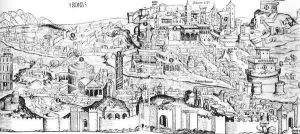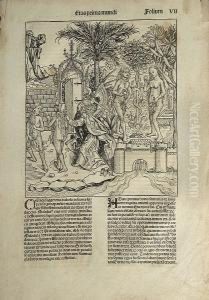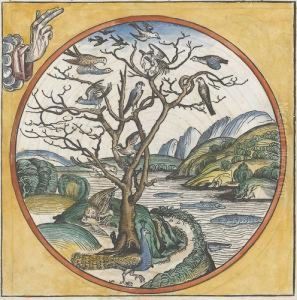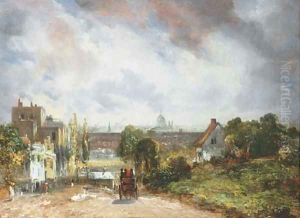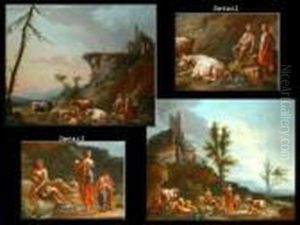





Nuremberg Chronicle, Page 100: View of the city of Nuremberg
-
About Reproduction
Discover the allure of art with our faithful reproduction of "Nuremberg Chronicle, Page 100: View of the city of Nuremberg", originally brought to life by the talented Hartmann Schedel. Unlike posters or prints, our hand-painted oil painting breathes an unique sense of depth and texture into your space. Every detail, every stroke, and every texture is meticulously recreated, paying the perfect homage to Hartmann Schedel and his artistic vision.
Owning this piece is more than just decoration - it's a statement of your refined taste in art. Let the vibrant colors and intricate details of this replica serve as a daily reminder of the beauty in our world. Elevate your decor and appreciate the richness of art with our replica of this masterpiece.
-
Painting Description
The Nuremberg Chronicle, officially known as "Liber Chronicarum" in Latin, is an incunabulum, which is a book printed before 1501 in Europe. Published in 1493, it was one of the earliest and most lavishly illustrated books of the 15th century. Authored by Hartmann Schedel, a German physician, humanist, and historian, the Chronicle is renowned for its detailed accounts of human history as per the biblical narrative, including the history of several cities. Page 100 of the Nuremberg Chronicle features a notable woodcut illustration depicting the view of the city of Nuremberg, which stands out as a significant piece of early modern cartography and urban representation.
The illustration of Nuremberg is particularly important as it reflects the city's status during the late 15th century. Nuremberg was one of the Holy Roman Empire's free imperial cities, a hub of art, culture, and science, and this is vividly captured in the woodcut. The artwork was created in a period when Nuremberg was at the height of its economic and cultural power, and it provides valuable insights into the urban landscape and architectural achievements of the time.
The Nuremberg Chronicle itself was a collaborative effort, involving not just Hartmann Schedel, but also artists Michael Wolgemut and Wilhelm Pleydenwurff, whose workshop produced the woodcut illustrations. Albrecht Dürer, who was then an apprentice in Wolgemut's workshop, may also have contributed, though his direct involvement is not conclusively documented. The printing was carried out by Anton Koberger, the godfather of Albrecht Dürer and the most successful publisher in Nuremberg at the time.
Page 100's view of Nuremberg is not just an artistic representation but also a document of the city's historical and cultural landscape. It showcases the city's prominent buildings, walls, and layout, offering a snapshot of Nuremberg's medieval urbanism. This woodcut, along with the rest of the Chronicle's illustrations, played a crucial role in disseminating knowledge about geography, history, and urban development across Europe, making the Nuremberg Chronicle a landmark in the history of printing and the visual arts.
-
Lead Time & Shipping
When you order this oil painting replica, it typically takes 2-3 weeks to paint. If the artwork is more complex, it might need a little more time to ensure the best quality. Once it's ready, we'll send you a photo for your approval. After you give the green light, we'll ship it to you for free.
-
Return & Refund
We believe in the quality of our hand-painted oil painting reproductions, and your satisfaction is our priority. If for any reason, you are not completely satisfied with your purchase, we offer a 45-day return policy. You can return your artwork within 45 days of receipt and receive a full refund. Please note that the artwork must be returned in the original packaging and in the same condition as it was received.





